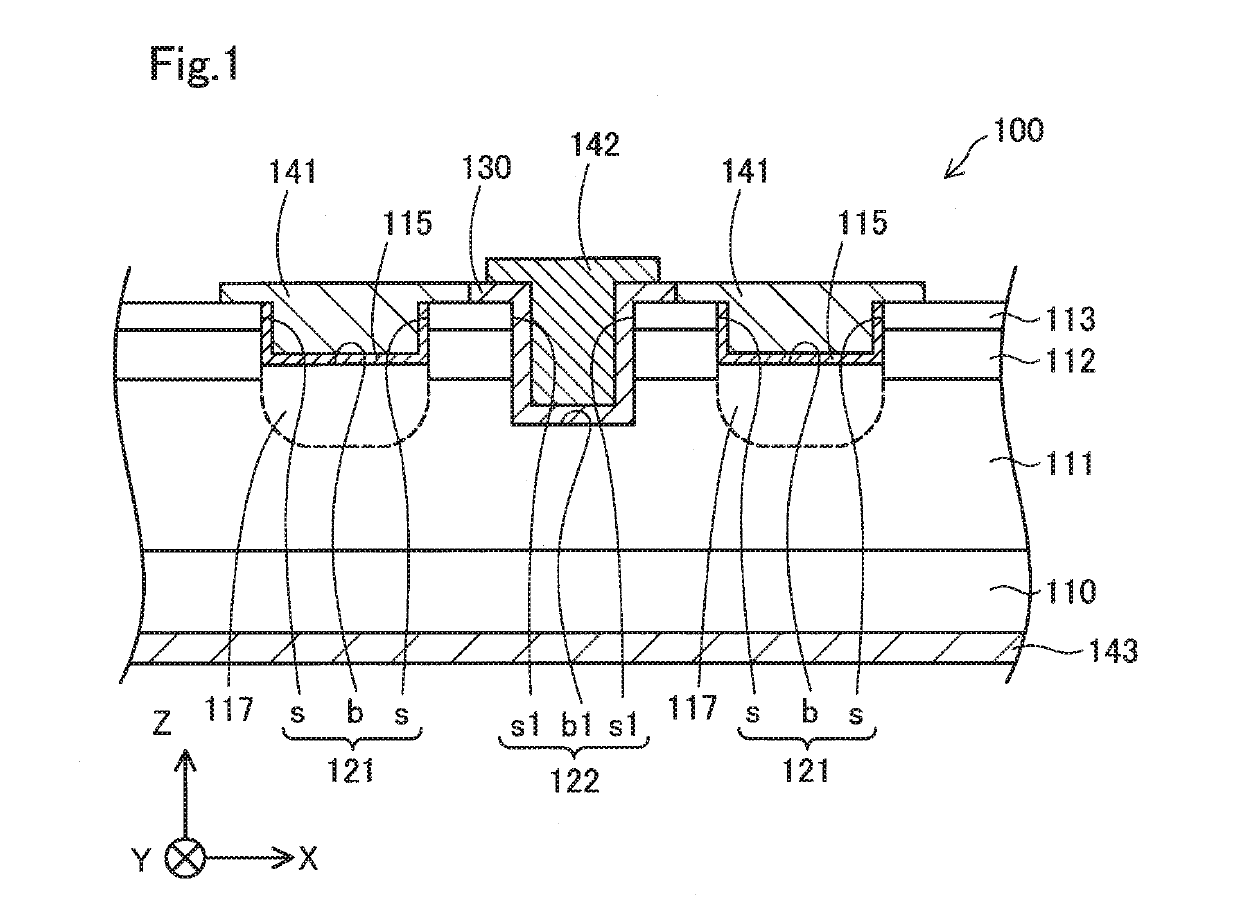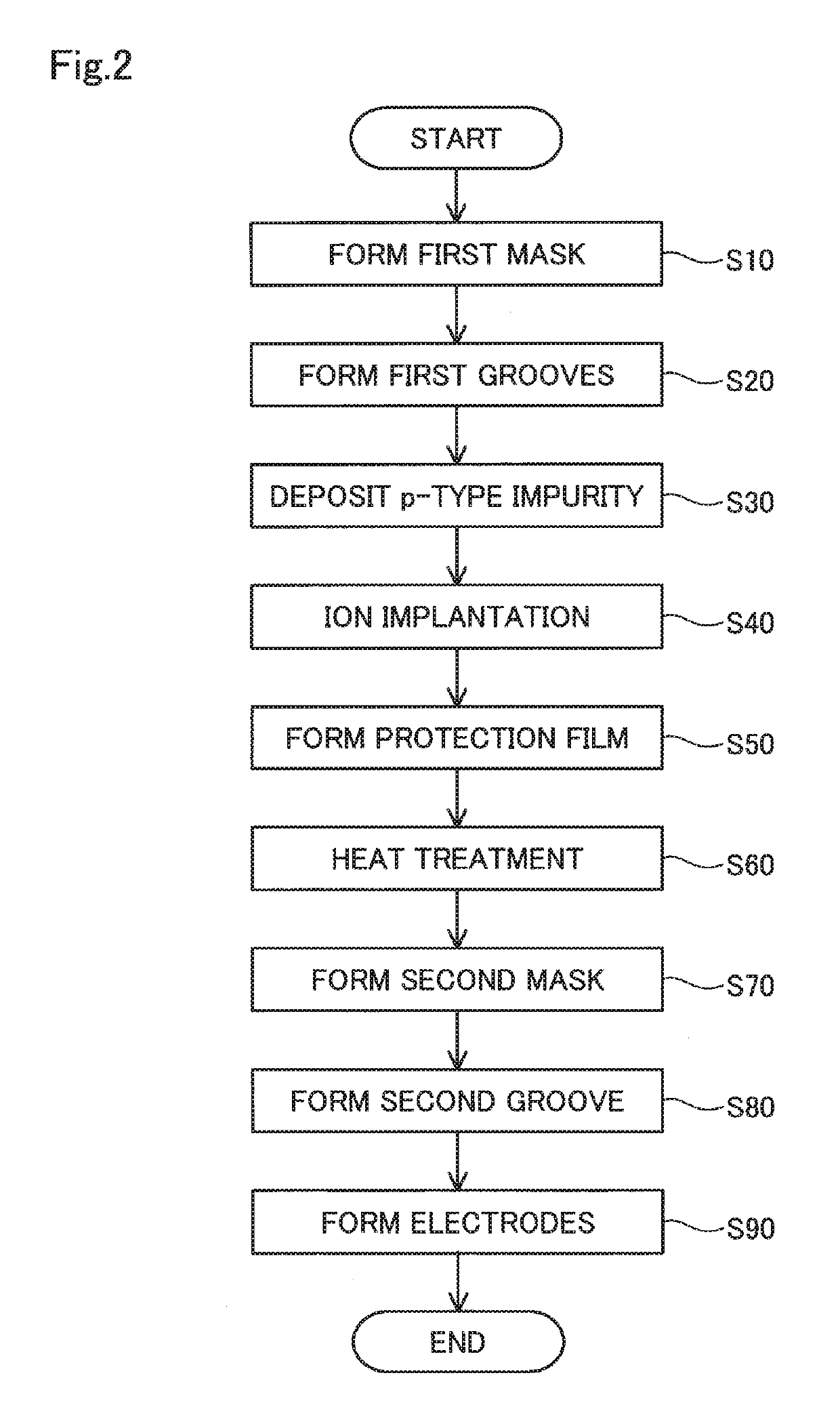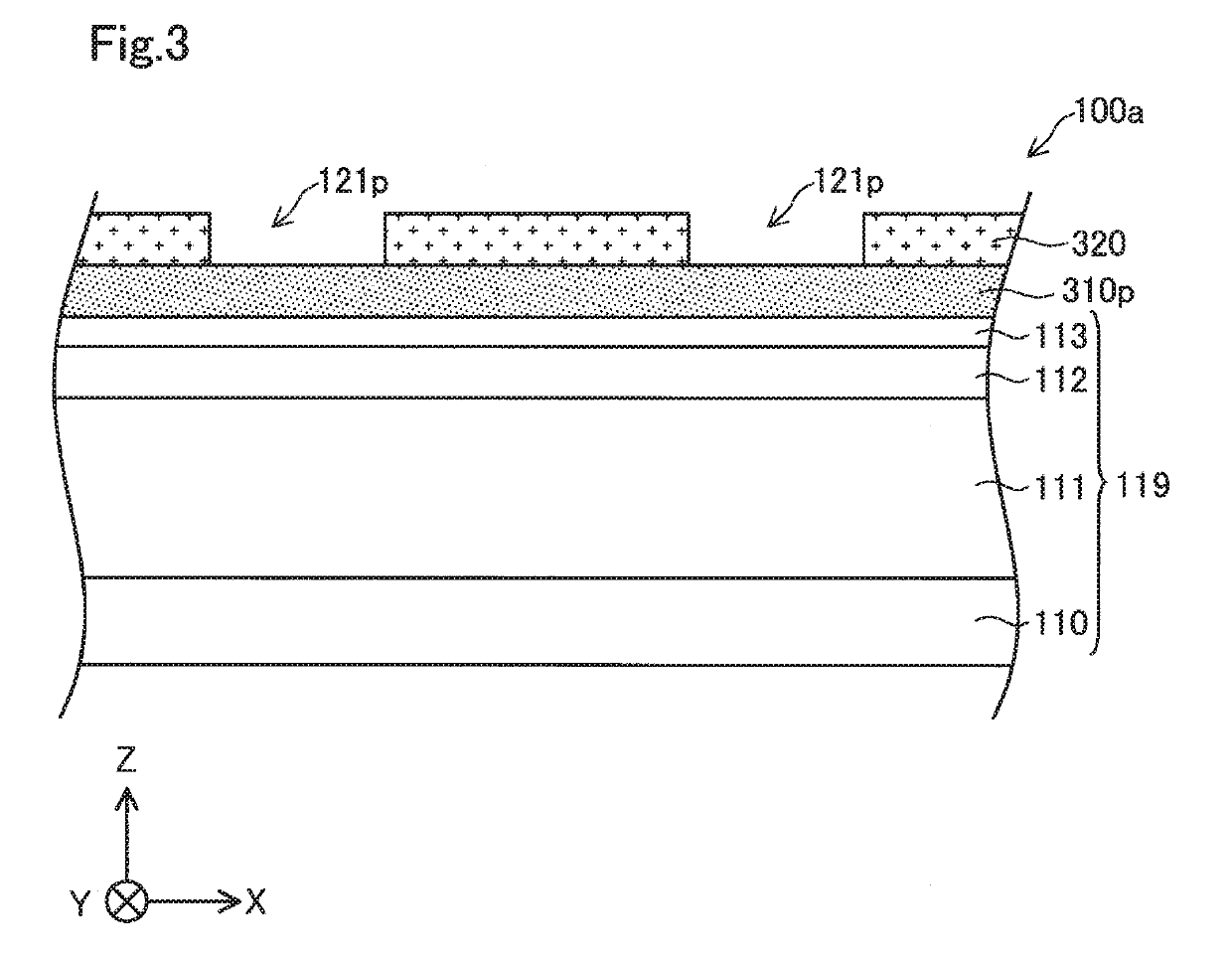Method for manufacturing semiconductor device
- Summary
- Abstract
- Description
- Claims
- Application Information
AI Technical Summary
Benefits of technology
Problems solved by technology
Method used
Image
Examples
first embodiment
[0040]FIG. 1 is a schematic diagram illustrating part of a semiconductor device 100 in cross section. It should be noted that FIG. 1 and the following schematic diagrams are provided to clarify technical features of the semiconductor device 100 and are not intended for indicating dimensions of each component accurately. For ease of description, XYZ axes substantially orthogonal to one another are illustrated in FIG. 1. The XYZ axes in FIG. 1 correspond to XYZ axes in other drawings. It should be noted that in the following description, a +Z-axis direction side will be also referred to as “above” or “upper side”.
[0041]The semiconductor device 100 is a gallium nitride (GaN)-based semiconductor device. According to this embodiment, the semiconductor device 100 is a vertical trench metal-oxide-semiconductor field-effect transistor (MOSFET). For example, the semiconductor device 100 is used for power control and is also called power device.
[0042]The semiconductor device 100 includes a su...
second embodiment
[0083]FIG. 13 is a schematic diagram illustrating part of a semiconductor device 200 according to a second embodiment in cross section. The semiconductor device 200 includes a p-type semiconductor layer 116 stacked on each of the p-type impurity deposition regions 115. The p-type semiconductor layer 116 is a structure formed by selective growth of a gallium nitride (GaN)-based semiconductor on the p-type impurity deposition region 115. According to this embodiment, the p-type semiconductor layer 116 contains magnesium (Mg) as an acceptor element. According to this embodiment, the p-type semiconductor layer 116 has a concentration of magnesium (Mg) equal to or less than 4E18 cm−3. According to this embodiment, the p-type semiconductor layer 116 has a thickness equal to or larger than 1 nm and equal to or less than 10 nm. The other configuration of the semiconductor device 200 is substantially the same as the semiconductor device 100 according to the first embodiment, and therefore wi...
modification 1
[0086]According to the above-described embodiments, the p-type impurity is deposited on the side portions “s” and the bottom portions “b” of the first grooves 121 by delta-doping. However, sputtering or vapor deposition may be adopted to deposit the p-type impurity on the side portions and the bottom portions “b” of the first grooves 121. An oxide film containing the p-type impurity may be formed on the side portions “s” and the bottom portions “b” of the first grooves 121.
PUM
 Login to View More
Login to View More Abstract
Description
Claims
Application Information
 Login to View More
Login to View More - R&D
- Intellectual Property
- Life Sciences
- Materials
- Tech Scout
- Unparalleled Data Quality
- Higher Quality Content
- 60% Fewer Hallucinations
Browse by: Latest US Patents, China's latest patents, Technical Efficacy Thesaurus, Application Domain, Technology Topic, Popular Technical Reports.
© 2025 PatSnap. All rights reserved.Legal|Privacy policy|Modern Slavery Act Transparency Statement|Sitemap|About US| Contact US: help@patsnap.com



